Remember her name?
Posted by Fatima Lozano, on 26 September 2025
I am an avid podcast listener, especially at the gym. Instead of fueling my reps with anger-fueled lyricism or upbeat songs that raise my bpm to 120, I noticed feeding my brain with podcasts is a better way of enduring my hour and a half workout. After all, what is a better way to feel incentivized to squat to 60 kg than to listen about how women have been overlooked in science? In the recent season of the So Cultured podcast, tears of anger fell down my face at the cruel injustices faced by Brenda Milner, Tu Youyou, and Marie Curie. Besides anger, I also felt inspired. Worried about my own academic journey, wondering if I am good enough, I found comfort in their stories.
Conducting my own investigation, wondering whose story is not largely known, I bumped into Hilde Mangold (or Hilde Proescholdt at the time) and “The Organizer.” During her doctoral studies, she used two species of salamander with embryos that differ in pigmentation to perform 259 transplantations of the blastopore’s dorsal lip into the ventral region of a host gastrula1, 2. This experiments catapulted Spemann for the Nobel Prize. In several significant cases, she observed that a secondary axis with neural system developed in the host embryos 3. Spemann and Hilde Mangold therefore concluded that the embryonic region of the dorsal blastopore lip was able to induce embryonic development and called this specific embryonic region an “organizer.”4
Hilde’s trajectory was impressive. At the age of 16, she attended the prestigious Gymnasium Ernestinum, at the time almost inaccessible to girls1. But like most young girls at the time, she was sent to a private institute for young ladies to learn proper housekeeping and social etiquette right after. But her curiosity and intelligence granted her a place at the University of Jena, which eventually led her to Spemann. She possessed a great deal of skill. Perhaps this dexterity to perform and master minuscule surgical operations could be attributed to the time she spent sewing in school. In fact, she had a keen eye for detail, documenting her implants with drawings in her lab notebook5, a skill that may be lost in the upcoming years with digitalization.
Although it was Spemann’s quest started in 1903, with the production of identical twins from newt embryos using his daughter’s hair loop6. The completion of the pusruit to find the said “organizer,” couldn’t have been done without Hilde. She expanded Spemann’s techniques. Used thin glass needles, often heated, to cut certain parts from the embryos or to burn them away. She was critical in providing the empirical evidence needed, imagine your dissertation helps your professor win a Nobel. And aside from prizes, this experiments were monumental for the time, forging paths for theoretical and developmental biology, and cell to cell communication.
Hilde’s story was short lived. Now I wonder what would’ve she further achieved is were not for dying at the young age of 26 from an accident. The best we can do is to continue living for them, and as other women at the time, to persist and lead by curiosity and resilience. Perhaps our time as graduate students are not as fruitful as Hilde’s, still, as students we understimate the work we do in the lab, and forget to advocate for our contributions. We troubleshoot for months, have failed results, or no results at all. So although we must perform the 200 experiments, we must celebrate and give some grace even if only 6 are significant. At the end, we are in fact, the sum of our parts.
References
- VAN Robays, J. (2016). Hilde Mangold-Pröscholdt (1898 – 1924): The Spemann-Mangold Organizer. Facts, Views & Vision in ObGyn, 8(1), 63–68.
- De Robertis, E. M., Driever, W., & Mayor, R. (2024). Celebrating the centennial of the most famous experiment in embryology: Hilde Mangold, Hans Spemann and the organizer. Cells & Development, 178, 203921. https://doi.org/10.1016/j.cdev.2024.203921
- Kumar, V., Park, S., Lee, U., & Kim, J. (2021). The Organizer and Its Signaling in Embryonic Development. Journal of Developmental Biology, 9(4), 47. https://doi.org/10.3390/jdb9040047
- Spemann, H., & Mangold, H. (1924). Über Induktion von Embryonalanlagen durch Implantation artfremder Organisatoren. Archiv für Mikroskopische Anatomie und Entwicklungsmechanik, 100(3–4), 599–638. https://doi.org/10.1007/BF02108133
- Driever, W., Holzschuh, J., Sommer, L., Nitschke, R., Naumann, A., Elmer, J., & Giere, P. (2024). Hilde Mangold: Original microscope slides and records of the gastrula organizer experiments. Cells & Development, 178, 203909. https://doi.org/10.1016/j.cdev.2024.203909
- De Robertis, E. M. (2006). Spemann’s organizer and self-regulation in amphibian embryos. Nature Reviews Molecular Cell Biology, 7(4), 296–302. https://doi.org/10.1038/nrm1855
- Von Bubnoff, A. (2024). The Spemann-Mangold organizer discovery and society. Cells & Development, 178, 203906. https://doi.org/10.1016/j.cdev.2024.203906
- Brandt, C. (2022). Vitalism, Holism, and Metaphorical Dynamics of Hans Spemann’s “Organizer” in the Interwar Period. Journal of the History of Biology, 55(2), 285–320. https://doi.org/10.1007/s10739-022-09682-9


 (No Ratings Yet)
(No Ratings Yet)